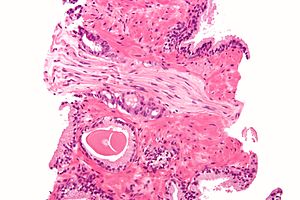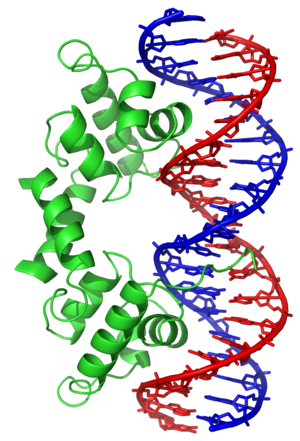 Image via Wikipedia Image via Wikipedia |
| A, B and Z DNA Structures, the building blocks of Proteins and Amino Acids Today's Theme For Pictures Today |
ARNA - Arena received an expected CRL on Saturday for its weightloss drug Lorcaserin. (Subscribers to BioRunUp were immediately notified via SMS and email alerts) The CRL was as expected with no real surprises. It will be interesting to see how the market reacts to the FDA's requests on Monday morning. ARNA closed at $1.63 on Friday after surging nearly 22% at one point during the day. These prices are much below its run-up high of $8 in late July. Arena Receives CRL
BIOD - Biodel is up for an FDA decision on 10/30/10, and trader consensus is clearly leaning towards a CRL from the FDA. Traders became even more jittery last week as the FDA delivered some heavy handed CRLs to AMLN/ALKS, on a drug that was widely expected to receive approval. The market seemed to react as if saying 'If AMLN/ALKS was 'in the bag' and the FDA required more trials, there is NO way that the FDA will approve Linjeta with that botch India data.' Trading at under a 100M market cap, BIOD has incredible potential on approval. However FDA uncertainty seems to have limited the run-up.
AVNR - Out of this week's watchlist stocks, AVNR seems to have the best odds of approval. Despite this, AVNR still took a hit from the AMLN/ALKS CRL. This was because that CRL was based largely because the FDA was concerned about prolongation of QT interval, a concern that was also expressed by the FDA in Avanir’s first CRL for AVP-923. Will this continue to haunt AVNR? We will soon find out.
EXAS - Its catalyst time for one of our best picks of the year. We recommended EXAS in the high $3 range and were thrilled to watch it climb to over $9. Study results are going to be presented this Friday, 10/29 at the AACR conference.
BioPharma Investor's Decisions:
Subscribe To BioPharma Investor in a Reader. RSS Feed
ARNA-CRL
Biodel--CRL
Avanir--CRL, although this one is a toss-up. The way things are going it will probably be approved. This is a very close call on Avanir. I'm am slightly leaning toward approval but with so many disapprovals I am just going with the statistics.
Exact Sciences---Clinical Trial News Oct 29th will be highly successful
| Lambda Repressor Protein bound to Lambda Operating DNA Sequence Molecules. |
The European Scientists are Coming out with Urine Testing for Prostate Cancer Diagnostic Testing. Ultimately, Exact Sciences will eventually have some competition as this market could change in the next few years.
Here is news of the European Advancements being made with the Institute of Cancer Research in the UK.
Protein urine test may signal prostate cancer
 Image via Wikipedia Image via Wikipedia |
| Adenocarcinoma, Prostate Cancer Cells Growing Acinar Type is the Most Common Form |
Scientists from the Cancer Research UK Cambridge Research Institute and the Institute of Cancer Research (ICR) said the protein, called microseminoprotein-beta or MSMB, is found at reduced levels in men diagnosed with the disease and are also lower in men with more aggressive forms of the cancer.
"The protein is easy to detect because it is found in urine and would potentially be a very simple test to carry out on men to identify those most at risk of developing the disease," said Hayley Whitaker of the Cambridge institute, who led the study.
Whitaker said that while it could be around five years before the results of this study are translated into a test for doctors to use in clinics, she hoped it would then also help them to determine which patients have aggressive tumors.
Prostate cancer killed an estimated 258,000 men around the world in 2008 and is the second most common cause of cancer death in men in the United States. In Britain, around 35,000 men are diagnosed with it and some 10,000 die from the disease.
The most effective screening tests currently available are based on a single biomarker called prostate specific antigen (PSA). But PSA testing is problematic because it has low specificity, which generates high false positive rates and leads to unnecessary surgical and radiotherapy treatment.
A U.S. study published last year found that routine PSA prostate screening has resulted in more than one million American men being diagnosed with tumors who might otherwise have suffered no ill effects from them.
"At the moment, PSA testing is the best method we have to detect prostate cancer but it has significant limitations, so there is an urgent need to find new biomarkers such as MSMB that could be used in screening and diagnosis," said Rosalind Eeles of the ICR and The Royal Marsden Hospital, who also worked on the study.
The protein -- which regulates prostate cell death -- is produced by normal prostate cells.
 Image via Wikipedia Image via Wikipedia |
| The Blue Ribbon is the symbol for Prostate Cancer |
The scientists took tissue and urine samples from around 350 men both with and without prostate cancer to test MSMB levels.
The results, published in the Public Library of Science (PLoS) ONE journal, showed that MSMB is found at significantly lower levels in the urine of men diagnosed with prostate cancer than those without the disease. They also showed men with aggressive tumors were also likely to have lower levels of the protein in their urine.
Commenting on the study, Kate Holmes of the UK's Prostate Cancer Charity, said they could prove very valuable in future.
Given the known limitations of the PSA blood test, finding a technique to accurately diagnose prostate cancer is the Holy Grail of research into the disease," she said in a statement.
"An accurate, reliable urine test for prostate cancer would be an invaluable tool if it is proven to be successful on a large scale."

With shares of EXACT Sciences (NASDAQ:EXAS) pulling back from multi-year highs in the low $9s back to the low-mid $7s as I write this article, I am adding to my long stock position ahead of the validation study results to be presented next week. Click here for my recent article on the merger of my site with BioRunUp.com, providing investors and traders with more resources to profit from FDA and clinical trial binary events.
Next-Generation (V3), Stool DNA (sDNA) based Colorectal Cancer (CRC) Diagnostic Test Kit
Pre-Clinical External Validation Studies (3) >> aiming to detect pre-cancerous adenomas (50% sensitivity target) and early-stage CRC (85% sensitivity target) to be widely adopted and commercially acceptable, already included in American Cancer Society screening guidelines with screening interval and role as potential mass screening test for CRC to be determined based on the pending validation study results and pivotal FDA study.
(1) Specificity Study - to establish normal range with approx. 1,000 normal samples, conducted by EXAS
(2) Training Set - to establish cut-off and sensitivity based on cancer and advanced adenoma samples with approx. 200 normal samples + 250 cancer / advanced adenoma samples, conducted by EXAS
(3) Test Set - independent data used to validate cutoff and establish test performance with approx. 100 cancer / advanced adenoma + 100 normal samples by external lab
On 7/28/10, EXAS reported preliminary results which demonstrated that a combination of DNA methylation markers detected 100%of colorectal cancers / pre-cancers at specificity cut-off of 100% and announced that it will report the results of three pre-clinical validation studies at AACR on 10/28/10 at 1pm (ET) followed by a 4pm (ET) conference call. A pivotal FDA study is expected to start during 2-3Q11 to support a potential FDA filing in 2012.
Only 24% of an estimated 90 million individuals in the U.S. are currently compliant with CRC screening recommendations, which results in an estimated 68 million people who are non-compliant. The early detection of CRC saves both lives and money by avoiding the high costs of dealing with late-stage disease through expensive anti-cancer drugs and/or palliative care. Late stage (III/IV) CRC accounts for 60% of diagnoses, but the five-year survival rates for Stage III CRC is 60% and just 11% for Stage IV disease. Compare those statistics to early stage disease, which includes a 90% five-year survival rate for Stage I CRC and 70% for Stage II.
In March 2009, EXAS conducted a management overhaul (with the share price increasing from $1 to $8 in the interim) that included Mr. Conroy and CFO Maneesh Arora, following their successful tenure at Third Wave Technologies, which was sold to Hologic (NASDAQ:HOLX) in 2008 for $582 million following the successful clinical development and FDA clearance of screening tests for cervical cancer
In August 2009, EXAS announced the appointment of Graham P. Lidgard, Ph.D., as Chief Scientific Officer, who has over three decades of clinical / molecular diagnostics experience and a successful track record at Gen-Probe (NASDAQ:GPRO). Other key collaborations include the Mayo Clinic (Dr. David Ahlquist), Johns Hopkins (Dr. Bert Vogelstein), Genzyme (NASDAQ:GENZ), Case Western Reserve (Dr. Sandy Markowitz).
EXAS enjoys a strong patent estate for CRC screening, including the following: (1) platform technology: exclusive licenses to digital PCR and BEAMing technology (both stool + peripheral blood detection) from Johns Hopkins University (JHU) for the detection of CRC; (2) content: APC (adenomatous polyposis coli)and p53 (these are two common genetic mutations associated with CRC) licensed from GENZ with diagnostic testing kit rights + exclusive licenses to key tumor biomarkers such as Vimentin gene; (3) methods: broad IP for stool sample processing.
In August 2008, research was published in which a total of 25 sDNA samples from CRC patients were analyzed and a next generation sDNA technology (V3) correctly identified 23 (92%) of the cancers. In the 16 of 25 cases where there were paired stool and plasma DNA samples, the sDNA technology detected mutated DNA in stool in 14 cases (88%) while only 8 (50%) corresponding plasma DNA samples had detectable levels of mutated DNA.
Financial model for EXAS / colorectal cancer (CRC) screening market in US:
- Approx. 40 million (M) shares of common stock outstanding, 47M on fully diluted basis, $37.3M in cash / equivalents as of 6/30/10, no debt and $150M shelf registration effective
- Estimated 100M Americans over age of 50 in 2013, which is potentially first year of commercialization in US for EXAS test for CRC screening
- With a five-year screening interval (20M people over age 50 per year), 10% market adoption rate (2M of the 20M people in US over age 50 using the sDNA CRS screening test), and $300 price per test estimate => yields projected market opportunity in US alone of $600M
- Assume the $600M revenue and 10% market adoption rate achieved in Year-5 of US commercialization (2017 estimate) with 65% gross profits ($390M), operating expenses (admin / sales / marketing / research) (SG&A, R&D) of $40M (one-half comprised of R&D), and 60M shares on fully diluted basis in five years
Gross profits ($390M) minus Operating Expenses ($40M) minus 35% tax rate => approx. $228M net income / 60M shares outstanding = nearly $4 per share in earnings power ($3.79) * 20 price / earnings multiple =$76 per share discounted back four years @30% to account for risk of validation study results, pending FDA pivotal study => yields 12-18 month price target estimate of $18 per share
Disclosure: Long EXAS
Related articles


No comments:
Post a Comment
Note: Only a member of this blog may post a comment.